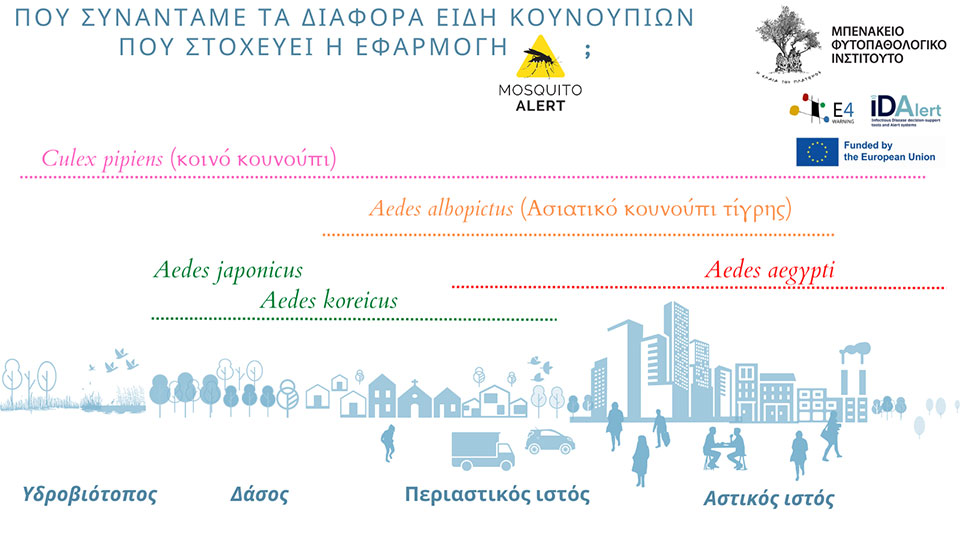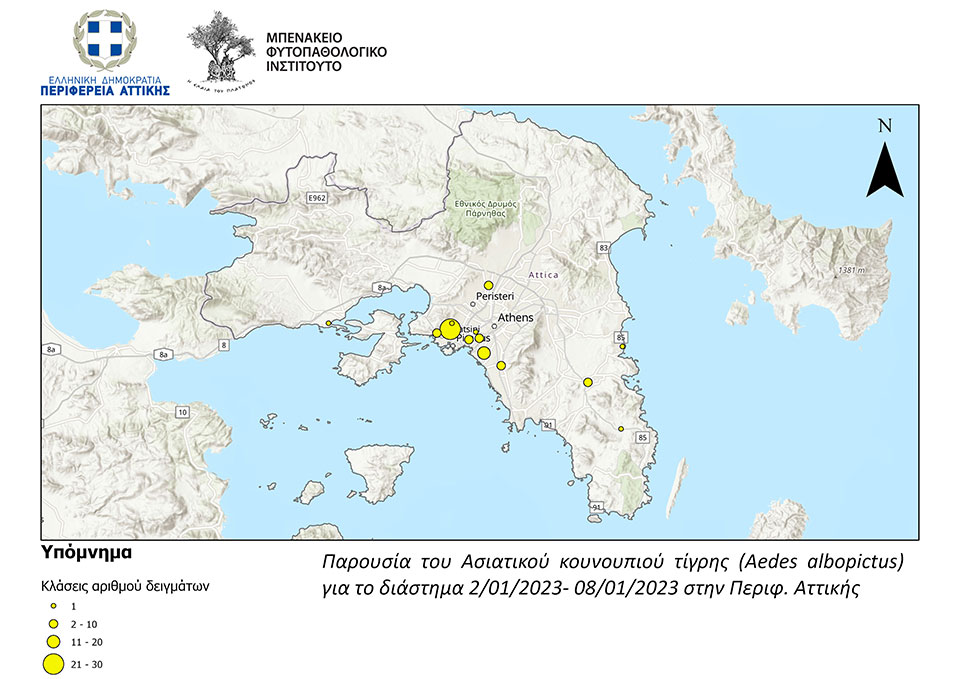
Why are there more mosquitoes? Why do they survive all year round, making life difficult for us? What species are circulating in Greece, how dangerous are they and how can we drive them away? The above questions concern not only scientists, but also each of us, since the insects in question have long ceased to be considered innocent. We can all contribute to the written response to the above questions if we use the mobile app.
“mosquito warning”now available in Greek for iOS and Android mobile devices, invites us to take a picture of the insects in question whenever we notice them around us and send the picture to the administrator − Phytopathological Institute of Benacio (IMP). In particular, scholars urge us to either we take pictures insect or let us know if geotags hit us or to inform about outbreaks of reproduction mosquitoes in public places.
The MFI team expects to receive through the application information about five different types of mosquitoes: in the Asian “tiger” mosquito (Aedes albopictus), the yellow fever mosquito (Aedes aegypti), the “Japanese mosquito” (Aedes japonicus), the “Korean mosquito” (Aedes koreicus) and the familiar common mosquito (Culex pipiens). . Data will be collected on adult (breeding) mosquitoes, their breeding grounds and their bites. “At the moment we know that common mosquitowhich has always existed in our area, spread throughout Greece” He says Dr. Antonios MichalakisHead of the Laboratory of Insects and Parasites Important to Health at the Benacio Phytopathological Institute (MPI), adding that tiger mosquitowhich was “imported” to our country in 2004, spread to the greatest extent Greece. The places for which we still do not have reliable data on the “presence” of the tiger are some areas of Western Macedonia, the Cyclades and some islands of the Aegean Sea.

However, at this time, the interests of the Greek scientific community are monopolized. yellow fever mosquito. “The mosquito in question is known throughout the world as transmitter of various virusesincluding yellow fever, dengue, chikungunya and zika. In fact, it is a much “better” transmitter than a tiger,” explains Dr. Michaelakis. Deadly mosquito linked to dengue epidemics in Greece. In particular, in 1881 in Crete, in the period 1895-1897. in Athens, in 1910 in Piraeus and for two years 1927-28. in Athens, Piraeus and Aegina, which is considered the deadliest dengue epidemic in Europe. Theoretically, a particular species could no longer be of concern, given that the last official record in Greece was made in the mid to late 60s. “However, we are on our guard, since since the 2004-2005 season he has been timidly reappearing, first in the Madeira Islands in the Atlantic, administratively belonging to Portugal, then in Turkey and, finally, in 2021-2022 in Cyprus.” notes Dr. Michaelakis.

Alarm flashes and new transmitters
New cases of these diseases are constantly occurring in Europe, but they mainly concern travelers who “import” the diseases. The exception last year was France, where they were recorded domestic dengue cases, in a population that has never traveled outside the country and with a “tiger” as a transmitter. The combination of reporting domestic cases of dengue fever with the possibility of a new vector entering has caused concerns of the competent European authorities. Therefore, this year’s Ministry of Health circular on integrated mosquito control programs makes special reference to this fact.
In the same time, it is possible that the “Japanese mosquito” will appear in Greece. “This is a species found in suburban, populated and forested areas, usually where there is vegetation,” says MFI researcher, Ph.D. Joanna Litra. “It was first registered in Europe in 2000 and has settled on the territory of several European countries until today,” she adds, emphasizing that “we will not be surprised if it is found in our country.”
The appearance of new species or the reappearance of old ones, as well as their “easy adaptability” to new conditions, are directly related to changing of the climate. It is indicative that “in all previous years, the activities of the “tiger” ended in late November or early December. But this year it remained active until the end of January. From then until the end of March, it was inactive and activated again in early April.” The high temperatures that prevailed in December, according to official EMY data, contributed to the “longevity” of the tiger for the first time. In particular, the temperature from December 9 to 18, 2022 was higher than the average for 1993-2021, even by six degrees.

Call to use the app
This fact affected not only the “tiger”, but also the common mosquito, which has been surviving for many years and causing inconvenience throughout the year. “This year it has been recorded in more places and in greater numbers than in the previous two winters,” says Dr. Michailakis, based on the data he has for Attica, where the IFIs are implementing the program in cooperation with the Region. “Recording the presence and seasonal changes of mosquitoes” with an extensive system of “traps”. “With the exception of Chania, we know that the situation is similar to Attica, from other regions of the country. we don’t have enough data so we are asking the whole world to use “Mosquito Alert” appsays Dr. Mikhailakis. “We want the application to collect as much information as possible, evaluate it and use it at an operational level, for example, by immediately informing the services responsible for implementing mosquito control programs,” adds Dr. Joanna Litra.
In the context of European funding from Horizon Europe, the IFI is participating in two projects, IDAlert and E4warning, with the aim of contributing to a better understanding of all the factors that are needed to build predictive models for important mosquito-borne diseases such as dengue fever. and West Nile virus (WNV).

Spain example
“Mosquito Warning” has been implemented in Spain since 2014 and has made the greatest contribution to scientific research,” says Dr. Michaelakis “K”, explaining that thanks to the implementation new species of mosquitoes have been recorded in various municipalities in Spain. “The species aedes janopicus was discovered for the first time,” adds Dr. Ioanna Litra, citing important data about the “tiger”, “whose presence was identified in 800 municipalities in Spain, while it was confirmed that it does not exist in another 6690 municipalities , despite the systematic participation of residents in the program. Through close collaboration between citizens and scientists, public health services use this information for emergency operations and/or the application of approved biocides, and in combination with other tools (eg mosquito trapping), they have become widespread.general picture of the situation. The application is also gaining momentum over time in Italy and to Netherlands. In Italy, especially due to the presence of the Chikungunya virus, the contribution of data is important. Based on the experience of Italy and the Netherlands, a new function has been added to the Greek version, according to which the user sends a sample. Therefore, in cases where there is a public health problem in the area, “mail sampling” can be activated.
Source: Kathimerini
Ashley Bailey is a talented author and journalist known for her writing on trending topics. Currently working at 247 news reel, she brings readers fresh perspectives on current issues. With her well-researched and thought-provoking articles, she captures the zeitgeist and stays ahead of the latest trends. Ashley’s writing is a must-read for anyone interested in staying up-to-date with the latest developments.